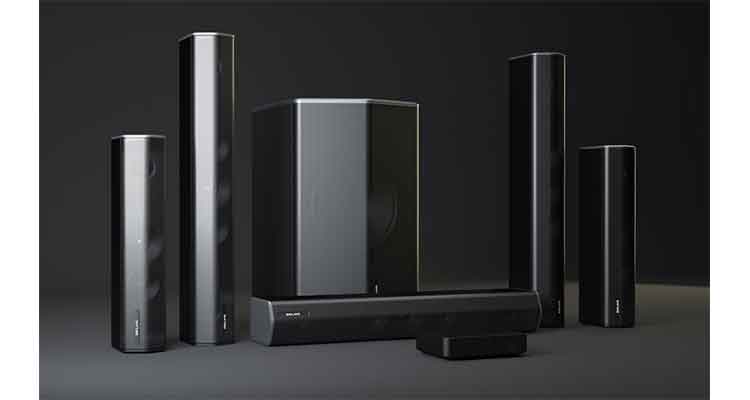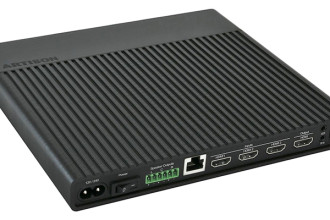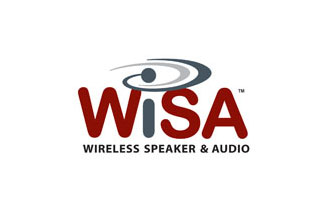The Top Ten Things You Need To Know About the Wireless Speaker And Audio Association
 There is a great technical white paper on the Wireless Speaker and Audio Association (WISA) website that I highly recommend reading if you get a chance. It delves into the challenges and benefits of wireless home theater, along with the recent advances in technology. If you don’t get a chance to read the entire paper, here is my list of the top ten things you should know when you see the WiSA logo. I have also indicated which sectors of the audiovisual (AV) industry that will be most affected by each, umm, thing:
There is a great technical white paper on the Wireless Speaker and Audio Association (WISA) website that I highly recommend reading if you get a chance. It delves into the challenges and benefits of wireless home theater, along with the recent advances in technology. If you don’t get a chance to read the entire paper, here is my list of the top ten things you should know when you see the WiSA logo. I have also indicated which sectors of the audiovisual (AV) industry that will be most affected by each, umm, thing:
Thing 1: WiSA compliance ensures uncompressed audiophile-quality wireless HD audio for home theater environments.
A WiSA-certified home theater system starts by decompressing an original audio file or stream from its native format, such as MP3, DVD, Blu-Ray Disc, CDs or from a satellite/cable box. The full, uncompressed, stream is sent wirelessly to your speakers, which have built-in amplifiers. The audio signal stays digital from the media to the surround speakers, where it goes through a single D/A (digital to analog) conversion before being reproduced by the loudspeakers.
Digital filters and crossovers can be applied just before the amplifier to equalize the signals and send them to the individual high, mid and low frequency drivers (formally known as tweeters and woofers). Since the power amplifiers are now part of the loudspeaker cabinets, they can be better matched to the combined impedance of the drivers and enclosures. This gives the loudspeaker manufacturers the ability to fine-tune their amplifiers and digital crossover to give desired frequency response.
Also, the individual driver cones can be time aligned by the manufacturer, so there is more coherence, and less phase distortion near the crossover point(s). This practice of time-aligning the individual speaker cones and compression drivers within a given loudspeaker enclosure has been fairly common in professional concert sound systems for the past 20 or 30 years, but was not available to most home theater owners until now.
Thing 2: WiSA communication uses the same native sampling rate as the high-quality media being played, up to 96 kHz (96,000 samples per second).
Here are some standard sampling rates for typical audio and video sources:
- 44.1k samples per second (Compact Disc and some MP3s, though not all)
- 48k samples per second (DAT, HD-SDI, Digital TV, most DVDs and Blu-Ray)
- 96k samples per second (Dolby, DTS, SACD, DSD, and DVD-Audio Discs)
WiSA-compliant devices directly support these sampling rates and are handled this way until they are finally amplified at each speaker location. It’s that simple. If it doesn’t seem that simple, here is a recent post on the WiSA Association Tumblr Blog that delves deeper into HD Audio and sampling rates.
Thing 3: WiSA uses the robust U-NII 5GHz band to transmit the separate audio channels to each loudspeaker.
Unlike other wireless speakers on the market that share frequencies with Wi-Fi devices, Bluetooth, baby monitors, and microwave ovens, WiSA communication use a portion of the 5GHz U-NII radio band that was recently made available, with a catch. This band requires Dynamic Frequency Selection (DFS) and was previously reserved for weather and military applications. These frequencies can only be used so long as conflicts with these important services are actively avoided.
WiSA-certified devices are required to look-ahead to determine the next open frequency. Conflicts are rare, but when the speaker system encounters interference from another device, it will automatically jump to the next open frequency without dropping any of the audio that is playing. Then, it will automatically begin looking for another open frequency, so it always has a backup channel to jump to. The result is no conflicts, no dropouts, no interference, and no hassles. Installation techs will no longer need to deal with conflicting Wi-Fi devices causing interference. As the Aerosmith song says, “Just Push Play.”
Thing 4: In order to display the WiSA logo, you need to be a WiSA Member or Associate Member
When a consumer sees the WiSA logo on a given piece of gear, or displayed by a reseller, they know that what they are buying has been properly tested, certified and sold following the guidelines outlined by the WiSA Association. There are two types of WiSA memberships:
- Members are manufacturers of products that incorporate WiSA technology. They agree to perform compliance and interoperability testing, and to abide by the WiSA trademark and logo usage guidelines. Members pay an annual fee of US $5,000.
- Associate Members are trusted vendors of WiSA-enabled products, such as branded resellers, who agree to sell WiSA compatible products that are 100 percent compliant sourced from licensed manufacturers. Associate Members may display the WiSA logo signifying their membership in the association and indicating that they sell WiSA-certified products. Associate Members pay an annual fee of US $3,000.
Thing 5: The WiSA Certification and Test Specification (CTS) makes sure that every conforming piece of equipment, regardless of brand, interoperates without degrading the quality promised by the underlying technology.
The Wireless Speaker and Audio (WiSA) Association was launched to advance the adoption of wirelessly transmitted high-definition (HD) surround-sound audio in the home theater environment by establishing the industry’s first interoperability specification and certification testing programs for manufacturers of high-performance wireless speakers, DTVs, Blu-ray Disc players, and other consumer electronics (CE) devices. Aperion Audio, DEI Holdings, Inc. (parent company to Polk® Audio and Definitive Technology), GGEC, Hansong Electronics Co., Klipsch® Group, Inc., Meiloon Industrial Co., Pioneer Corporation, SHARP Corporation, Silicon Image, Summit Semiconductor and Sam Runco are Advisory Board members of the WiSA Association. They are committed to promoting interference-free, wireless surround-sound audio across a wide range of consumer electronics devices.
All WiSA-compliant wireless speakers and components are interoperable, meaning you can mix and match components from different manufacturers to create a customized home theater surround sound system. Just look for the WiSA logo on the box or on the the speakers. When you see the WiSA logo, you know it will work with other WiSA compliant products, because they have been tested and certified. No adapters needed.
Thing 6: WiSA certified systems can automatically set the volume and delay of each speaker based on the physical distances between each speaker.
Discussion: Let’s define digital delay versus acoustic delay. Digital delay is inherent in all computer-based devices, because all computations require a minimum number of clock cycles to complete. Engineers can also add digital delay to replicate acoustic delay. Acoustic delay is the time it takes for sound to travel through the air to your ears after it has been reproduced by the loudspeakers.
The WiSA technology starts with a fixed 5ms internal delay for communication reasons. This delay is short enough that there is no need to worry about lip synch being thrown off in movies or television shows. Once the loudspeaker towers have been placed into the living room, the proper acoustic delays are set using an on-screen display and handheld remote.
If the speakers are outfitted with ultrasonic transducers (in higher-end models), they can automatically configure themselves, including the channel assignments (right vs. left), and adding the proper digital delay times to accommodate for the acoustic delays in the room. Just make sure all the speakers can “see” each other during this initial setup process, that no plants or furniture are blocking the ultrasonic transducers. If the speakers are not outfitted with ultrasonic transducers (more affordable models), positioning speakers may be supported by an on-screen display (OSD).
Thing 7: WiSA-certified systems can be easily moved or rearranged to support new furniture layouts.
Let’s say you are a traveling nurse with an affinity for science fiction movies and your job takes you to a new city every six months. Now with WiSA certified wireless speakers, you can purchase a great sounding, loud 5.1 surround sound system that is easy to setup and reconfigure each time you move apartments. You will be watching your favorite comic book heroes come to life in no time.
Maybe you are settled in and plan to live in your house for a while. You can still benefit from WiSA certified technology when it’s time to remodel and/or buy new furniture. You can (carefully) take your WiSA compliant speakers outdoors on clear nights for parties or outdoor movie nights. Or set them up in the basement of your house for teen night. Schools could purchase one WiSA-compliant surround sound system and share it between different classrooms, and secure it in a storage closet when not in use. That would sure beat what many of us had growing up: a filmstrip projector on a cart with a cassette player, or maybe a TV with a VCR?
Laserdisc anyone? Anyone?
AV rental companies can offer surround sound for small events, and possibly larger events in the future. Right now, the suggested maximum room size for a WiSA compliant system is 30’x30′.
Thing 8: You can adjust the “sweet spot” using the MyZone button on the handheld remote.
You may not want to tell the kids about this part: With a WiSA-certified system, the end-user can adjust the optimal listening position (aka the sweet spot) using a handheld remote controller, which also has an ultrasonic transducer built into it. With the push of one button, the center loudspeaker triangulates the location of the remote control, and instantly sets the delays and volume levels of each loudspeaker, so they are optimized for that particular seating location. Alternatively, the end user can also adjust the sweet spot using their on-screen display.
Thing 9: WiSA-certified systems are scalable from a sound bar to 7.4 Surround Sound, making them somewhat future proof.
All WiSA-certified systems are interoperable amongst transmitters and loudspeaker brands. For example, a consumer might start today with a WiSA-certified sound bar for their flat screen television, then add a WiSA subwoofer for the big game. In a year from now, that same system can be easily upgraded to 5.1 surround sound by simply adding the 4 surround sound speakers. You don’t have to replace the entire system, you can keep your original transmitter, sound bar, and subwoofer. When you move to a new home that has a larger living room, you can upgrade again to 6.1, 7.1, all the way to 7.4. And the speakers don’t need to all be from the same manufacturer, you can mix-and-match if you think one brand has a better subwoofer, etc.
Thing 10: WiSA products give the Value Added Reseller (VAR) a good reason to call their old clients.
Let’s face it. Thanks to the Internet, AV equipment margins are not what they used to be. Installation labor rates are fair, but usually just enough to cover payroll, vehicles, and insurance. So how can you make a living as a value added reseller? Today’s successful VAR and/or residential integrator do not disappear when the installation is completed. Some will return periodically to perform system maintenance, cleaning, and/or firmware upgrades. Others offer 24/7 phone support or 48-hour replacement service plan options, but many residential customers don’t renew these plans after the first year. So how does the VAR keep in touch with their clients, other than holiday cards, and email blasts?
With WiSA-certified wireless loudspeakers, you now have a reason to call all of your old customers, especially those who only hired you to install a TV. If I were a reseller, I would offer each of my customers a free 30-day in home trial of the WiSA surround sound system including unboxing and setup, and choosing optimal speaker locations. If the consumer likes it, they keep it and pay the bill. If they don’t, a van will arrive on Day 31 to pack everything up. Once they hear the system in their own living rooms, it will sell itself.
 For more ways that a value added reseller can benefit from WiSA speaker systems, check out this blog.
For more ways that a value added reseller can benefit from WiSA speaker systems, check out this blog.
Jim Venable, President, WiSA Association, is an industry veteran with over 25 years of experience in bringing breakthrough technologies to market. His understanding of mobile, PC, and CE markets is derived from executive experience at Silicon Image in his leadership role with the IP Licensing group and from senior management positions he has held at Motorola, Mentor Graphics, Hitachi, AMD and Sharp.
Prior to heading the Wireless Speaker & Audio Association, Venable helped drive the adoption of the Serial Port Memory Technology (SPMT) standard as the president of SPMT Consortium. Venable holds a degree in electrical engineering from Texas Tech University.





